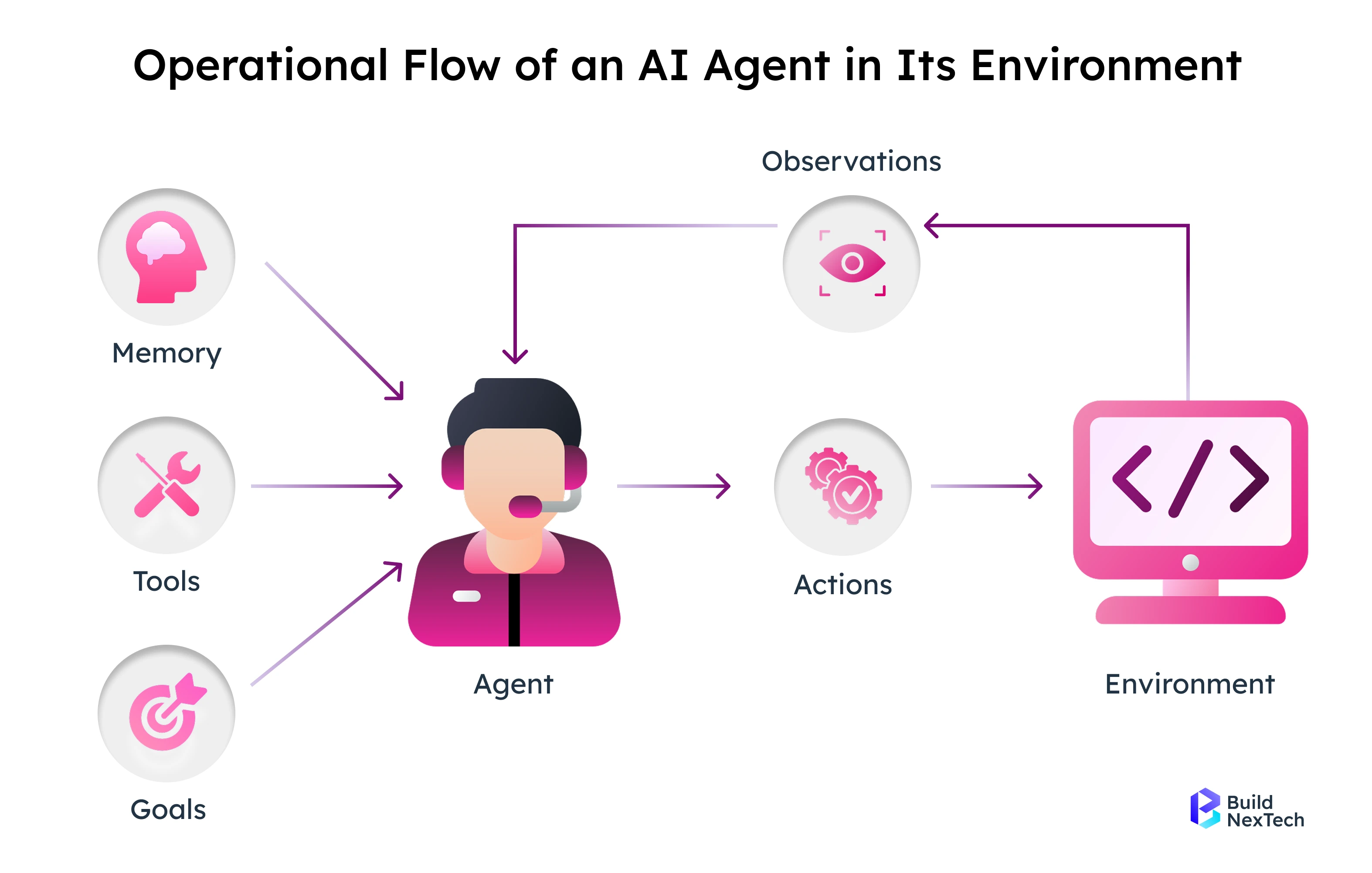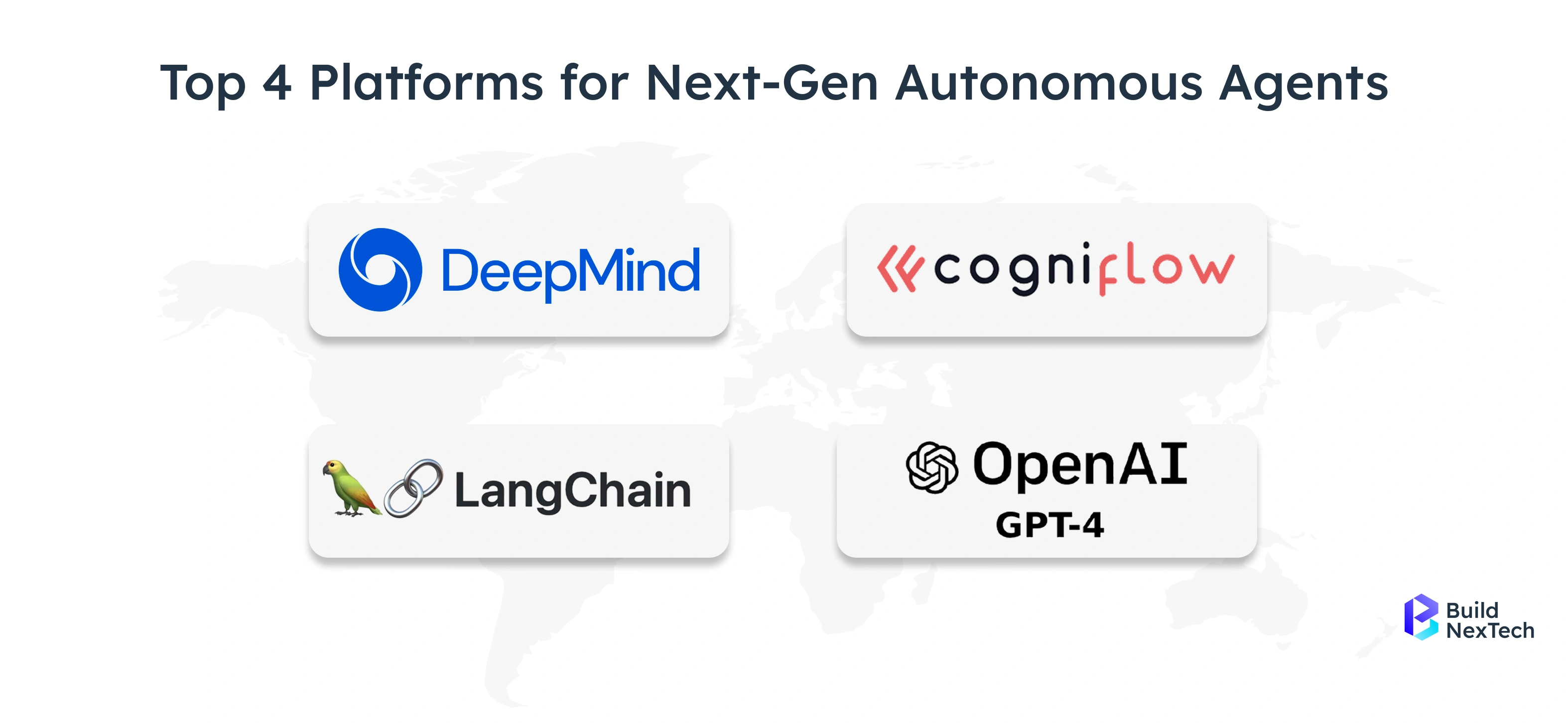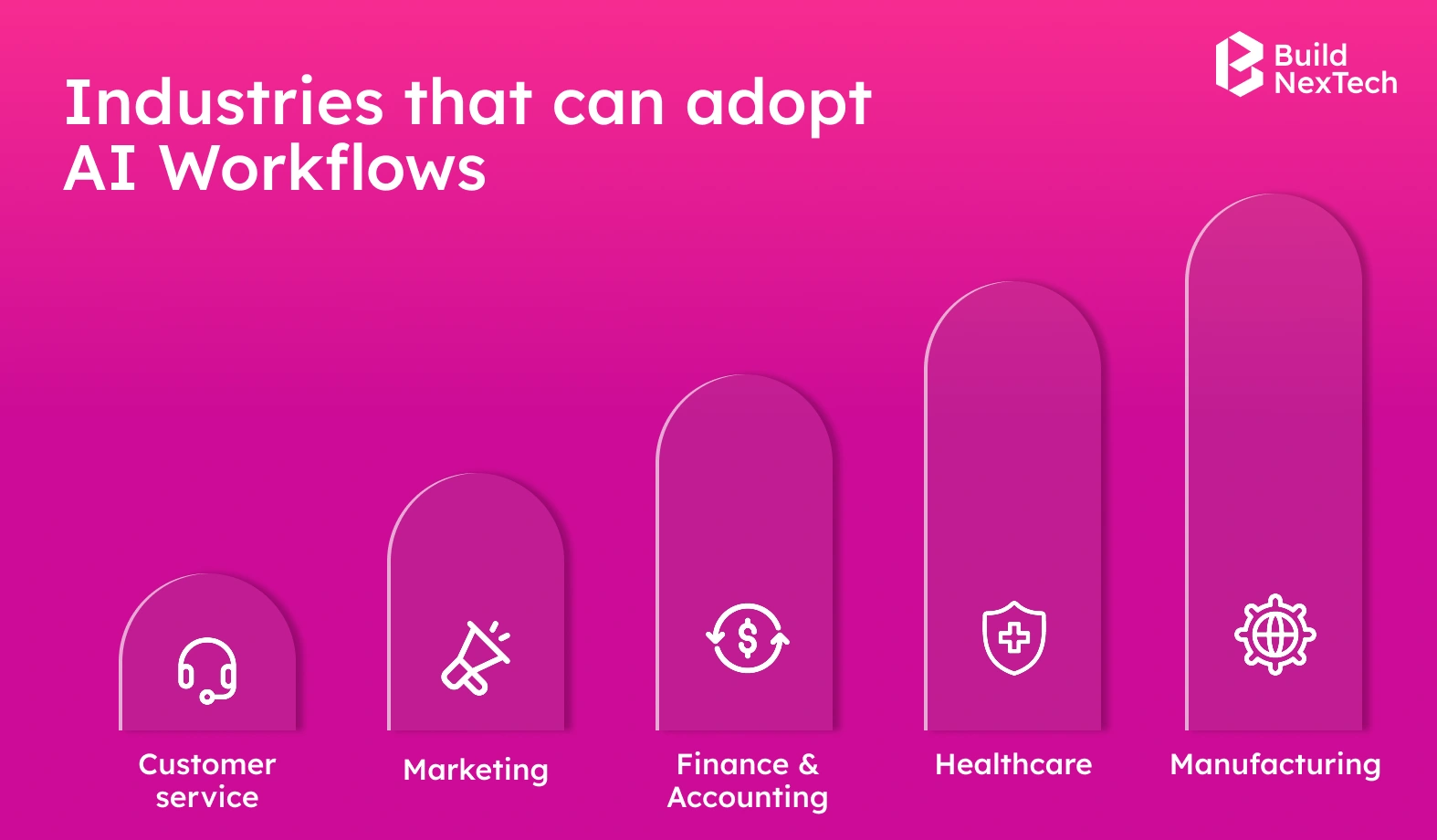By the start of 2025, intelligent agents will transform the way businesses are conducted. No longer traditional AI or generative AI, these AI systems are capable of making independent decisions, handling complex tasks, and optimizing work processes. Autonomous agents read the context, respond to changing conditions, and work without much human oversight, unlike static automation.
Using AI-based decision-making and current workflow automation software to combine the two techniques will allow companies to simplify processes, increase efficiency, and scale productivity. This guide will discuss the reshaping of modern business processes by multi-agent systems and AI processes, the strategies to implement them successfully, and the tools that will allow orchestrating the autonomous workflow in 2025.
What is Agentic AI? A Beginner’s Guide
The next step in the development of artificial intelligence will be agentic AI - systems that do not react to a request but take the initiative. In contrast to the traditional AI that is not able to take autonomous decisions and actions, and instead requires human input, agentic AI is capable of autonomous decisions, planning, and collaboration with other agents to attain goals. It is capable of thinking, acting, and adapting as an intelligent collaborator and is, therefore, a game-changer in businesses and in real-life situations.

Understanding Intelligent Agents and AI Systems
By 2025, intelligent agents will become the central aspect of transformation within the enterprise. These AIs are self-directed systems that work together with other agents and can do multi-step procedures without always being guided by humans. They provide the interface between the traditional automation and adaptive, context-sensitive decision-making processes and allow organizations to control the workflow systems on a large scale.
How Intelligent Agents Differ from Generative AI
Generative AI is an excellent content-generating model, meaning that it can be used to generate text, images, or snippets of code; however, AI agents go beyond that by executing the actual action. Multi-agent systems can coordinate within the departments, combine the information from various sources, plan the working processes, and provide a flawless implementation of activities.
The Evolution: From Static Workflows to Multi-Agent Collaboration
The history of automation features the shift in the inert workflows to autonomous workflow orchestration:
This development indicates the way organizations are using intelligent agents and AI systems to develop hyper-autonomous enterprise systems, lessen manual labor, and maximize business methods.
Why Intelligent Agents Matter for Modern Workflows
Paper trails may cause a bottleneck in the operations that are fast-paced. By incorporating AI processes and self-directed systems, companies can:
- Streamline the process of resource distribution.
- Automate repetitive tasks
- Reduce errors and downtime
- Embark on the automation of the enterprise in the departments.
These agents are strategic partners, whether it is in supply chain management, project management, or customer service. As a result of this, organizations can scale efficiently, and they are able to maintain a competitive advantage.
Common Challenges in Adopting Autonomous AI Programs
Although it has such advantages, there are some challenges associated with the deployment of autonomous AI programs and multi-agent coordination:
- Data Integration: finding equilibrium between through streams of multiple data streams.
- AI Application Ethics: Responsible AI - It is important to have AI that is morally and legally responsible. The fairness, privacy, and responsibility of the businesses should be given priority to prevent prejudice and abuse without losing confidence in automated decision-making.
- Complex Training: The teams need Gen AI certification or timely engineering knowledge.
- Workflow Silos: Workflow system discoordination - When autonomous AI tools are operating within siloed systems, it creates inefficiencies and data silos. Regardless, bringing everything under a unified framework will enable employees and AI agents to communicate more effectively with each other, facilitating easier coordination and improved outcomes.
Viewpoint: It is advisable to begin with a small process and pilot one process at a time, and map your automation in a workflow diagram template or workflow chart. Gradual scale after the process has been proven.
How to Build an Effective AI Workflow Strategy
A powerful AI workflow plan will make the adoption and ROI measurable. Steps include:
- Analyze Current Workflows: Know what workflow automation adjusts processes and which are the bottlenecks.
- Establish Specific Objectives: Stipulate specific objectives, including improved turnaround, reduced errors, and reduced cost.
- Applicants: Select workflow automation software or enterprise workflow management software, or AI agent development services.
- Design and Map Processes: Visualization uses templates of the workflow creator and workflow diagram.
- Implement AI Agents: Implement Gen AI agents or autonomous agents to complete repetitive and cognitive duties.
- Monitor and Optimize: Improve multi-agent collaboration with the help of user feedback, contextual memory, and performance analytics.
AI Workflow Framework: From Reactive to Proactive
Conventional workflows react to events, whereas contemporary AI-based systems allow dynamic decision-making. The artificial intelligence programs that are autonomous are now able to predict bottlenecks, assign resources in advance, and dynamically adapt the processes.
This change complies with the objectives of automation of the enterprise, which increases its productivity and reduces downtime.
The Agentic AI Workflow Process: Step-by-Step
The Agentic AI Workflow Process: Step by Step.
The adoption of Agentic AI and multi-agent coordination cannot be done without any organization and strategic approach. All the steps within the working process will keep the AI agents consistent with business goals and be efficient, scalable, and controllable.
1. Evaluate Workflows
The first step is to analyze your current workflow management system to identify inefficiency, bottlenecks, or repetitive tasks. Identify those areas where delays in decision-making or manual interventions decrease productivity. This evaluation assists in the identification of the areas where autonomous agents can provide the greatest value, whether it be in data processing, customer interaction, or operation management.
2. Issue Goals
Establish specific, quantifiable objectives for the use of AI. These may take the form of the completion of the task faster, an increase in accuracy, a rise in throughput, or scalability. By setting certain performance goals, all AI agents will work in a goal-oriented manner and have some objective success metrics. It is important to keep in mind that automation without guidance may result in uncoordinated results.
3. Choose AI Tools
This may involve the development of AI, Generative AI studios, or enterprise AI development platforms that can support multi-agent frameworks. The technology selected must match your infrastructure, support autonomous behavior, and give you the flexibility of customization and expansion.
4. Design Workflow
Visualization and documentation of each process should be done before the integration of AI agents. Represent the flow of information, dependencies, and decision points as workflow charts, process maps, or a workflow creator tool. Such a step will guarantee that it is clear how human teams and AI agents will interact, with each step being the responsibility of the specified person, and automation being the most appropriate.
5. Introduce AI Agents
An intelligent deployment should be done over time, with specific, repetitive, or cognitive tasks being deployed first. These agents can handle data entry, deal with customer care interactions, and are even able to make real-time business decisions. When they learn and adapt, the AI agents will start to collaborate across systems, forming a networked, autonomous workflow environment.
6. Ongoing Optimization
AI agentic systems are systems that demand continuous learning. Conduct periodic oversight and adjustment of AI activities by engineering updates, performance measurement, and feedback. Human control is also crucial - controlling, monitoring, and perfecting AI functions is necessary to ensure transparency, adherence, and increasing efficiency due to the growing system between departments.
Essential Tools for AI Workflows and Automation
In order to implement a successful Agentic AI, companies should have the appropriate tools to design, manage, and optimize automated workflows. Such tools are useful in unifying AI agents, automating operations, minimizing human effort, and ensuring that operations are being performed efficiently within the departments. The appropriate selection of automation and workflow tools will help to optimize productivity and attain scalable and intelligent operations.
Best Platforms of Autonomous Agents in 2025
With the further development of the Agentic AI, it is essential to select an appropriate platform to implement autonomous agents. The optimal platforms will allow the multi-agent coordination to occur smoothly, support complex workflows, and offer monitoring tools, optimization, and integration with the existing business systems. The following platforms are remarkable in terms of their high-level features and scaling ability, as well as convenient interfaces, assisting enterprises to fully utilize the features of smart automation in 2025.

1. CrewAI
- An innovative platform that is able to create independent AI agents capable of complex tasks without constant human interventions.
- Mainly aimed at workflow automation, API integration, and the supervision of complex flow processes.
2. LangChain
- A toolkit for to create programs that leverage large language models (LLMs) in a structured and logical manner.
- It supplies the resources for the combining of LLMs with APIs, databases, and prompts to carry out difficult tasks.
3. Cogniflow
- Not a widely recognized mainstream platform yet; probably a no/low-code AI workflow tool.
- Seeks to make AI automation easier, thereby linking AI models with business processes.
4. OpenAI GPT-4
- The state-of-the-art model in the large language category for text generation, reasoning, and multi-turn conversations.
- It can be used in applications, agents, and tools to execute language-based tasks.
5. DeepMind
- A research lab in AI science dedicated to creating universally intelligent systems and to resolving scientific challenges that are of great complexity.
- It has been a leader in fields such as reinforcement learning, protein unfolding (with AlphaFold), and multiparty systems.
Workflow Automation Tools to integrate
Argo Workflow
- Productively operates CI/CD software deployment systems.
- Automates through a self-directed agent to minimize human mistakes and errors.
- Accelerates software project development through integration of production and development efforts.
Workflow Management System Software
- Gives business-level monitoring and control of business operations.
- Monitors the completion of tasks, spots bottlenecks, and streamlines processes.
- It connects with smart agents to automate daily activities and retain complete transparency.
Workflow Automation Solutions
- Automates operations in several departments and systems with interconnection.
- Streamlines the approvals, structures operations, and maximizes productivity.
- Reduces workforce and mistakes to a minimum by facilitating AI-based processes.
Real-World Examples: AI Workflows in Action
The use of agentic AI is changing the way industries work, as it is automated, workflows are optimized, and decision-making improves. We shall discuss practical examples in the various industries:

1. Finance
Use Case: Accounts payable workflow solutions.
Outcome: Finance teams will be able to shorten the amount of time spent processing invoices, approvals, and reconciliation by 60%. This not only speeds up the management of cash but also reduces human errors, enhances compliance, and makes teams free to concentrate on strategic financial planning.
2. Healthcare
Use Case: Clinical documentation automation.
Outcome: AI-based documentation systems improve work with patient records, enabling healthcare providers to dedicate more time to their patients. The automation guarantees quicker and more precise maintenance of records, decreases the workload within the administration and raises the adherence to legal norms.
3. Marketing
Use Case: Artificial Intelligence as the search engine optimizer.
Result: The marketing teams apply AI to understand the trends, optimize the material, and enhance the rankings of the search engines. The outcome is an increased campaign performance, an improved ability to target the audience, and quantifiable gains in both engagement and conversions with reduced manual effort.
4. IT
Application: AI/ML development services application.
Impact: IT departments combine AI and ML processes to operate digital operations on a massive scale. This facilitates rapid software creation, effective system observing, and proactive analytics, and results in scalable functions, enhanced reliability, and speedy innovation.
The Future of AI Workflows: Emerging Trends
In the future, there will be developed AI ecosystems, autonomous workflow orchestration, and hyper-autonomous enterprise systems in the year 2025. Emerging trends include:
- Enterprise transformation, Multi-Agent Agentic AI.
- Graph neural networks and neuro-symbolic artificial intelligence (AI) in knowledge-based decision-making.
- Parallel processing, real-time learning, and quantum-enhanced agents.
- AI workflow integration (as a service), iPaaS.
Firms using AI consulting services, AI strategy consulting services, and enterprise AI development services will have a competitive advantage.
Conclusion
In 2025, the conduct of businesses is evolving due to the appearance of intelligent agents and the development of self-directed AI programs. The combination of AI technology and multi-agent and workflow automation software helps organizations automate and simplify complex processes, reduce human input, and achieve high productivity. Using AI workflows and generative AI agents, teams are able to make decisions faster, accomplish tasks more rapidly, and proactively handle tasks, allowing these teams to pursue high-value and strategic activities.
Such businesses that have put in place autonomous workflow orchestration and enterprise automation technologies will be in a position to have a competitive advantage in the future. With AI ecosystems and prompt engineering, and multi-agent systems, the organizations will be capable of developing scalable, adaptive workflows that may be improved over time. Through the implementation of these solutions, companies will be oriented towards sustainable development, operational flexibility, and intelligent automation leadership.
People Also Ask
Do I need to know code to use AI workflow software?
The majority of workflow automation software platforms are no-code (or low-code), enabling the teams to implement intelligent agents without complications.
What are the key tools or platforms for autonomous agents in 2025?
Gen AI Studio, AWS Gen AI, and Adobe Gen AI, along with workflow management tools, can facilitate the smooth collaboration between agents.
What is the difference between a workflow system and workflow orchestration?
A workflow system is an automation of predefined tasks, whereas workflow orchestration halts the coordination of multiple AI workflows between departments through multi-agent systems.
Can Gen AI agents collaborate in workflows?
Yes. Multi-agent collaboration can be used to have autonomous agents collaborate together which makes it possible to have end-to-end automation of processes.


























.webp)
.webp)
.webp)

